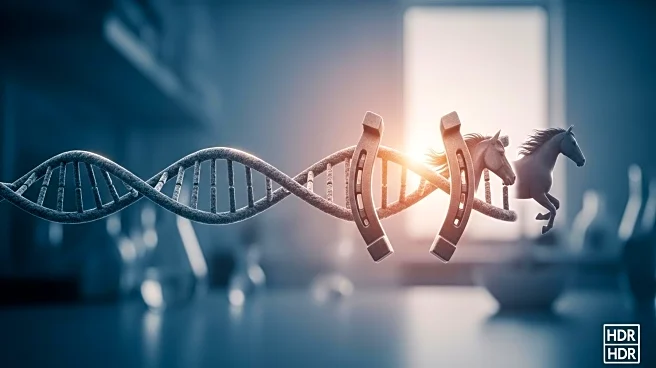What is the story about?
What's Happening?
A study published in the journal Science suggests that a single genetic mutation may have been crucial in making horses rideable. Researchers from the Center for Anthropology and Genomics in Toulouse, France, analyzed DNA from ancient horse remains, focusing on genetic markers linked to traits like behavior and locomotion. They identified a mutation in the GSDMC gene, associated with body shape and spine structure, which likely enhanced the horses' strength and mobility. This mutation became dominant in the horse population around 4,200 years ago, coinciding with the rise of horse-based mobility. The study also highlights the ZFPM1 gene, linked to tameness, as a factor in early horse domestication.
Why It's Important?
Understanding the genetic basis of horse domestication provides insights into human history and the development of societies. Horses played a pivotal role in transportation, agriculture, and warfare, shaping civilizations. The identification of specific genetic changes offers a clearer picture of how early humans selectively bred horses for desired traits. This knowledge can inform current breeding practices and conservation efforts, ensuring the preservation of genetic diversity in horse populations. Additionally, the study contributes to broader discussions on domestication and the genetic factors that influence animal behavior and adaptation.
What's Next?
Further research is needed to explore the effects of the ZFPM1 gene and other polygenic traits on horse evolution. Scientists aim to conduct detailed studies on how these genetic factors have shaped horse behavior and adaptation to different environments. The findings could lead to advancements in breeding programs and conservation strategies, promoting the health and sustainability of horse populations. Continued exploration of genetic mutations in domesticated animals may also provide insights into the domestication processes of other species.
AI Generated Content
Do you find this article useful?
















